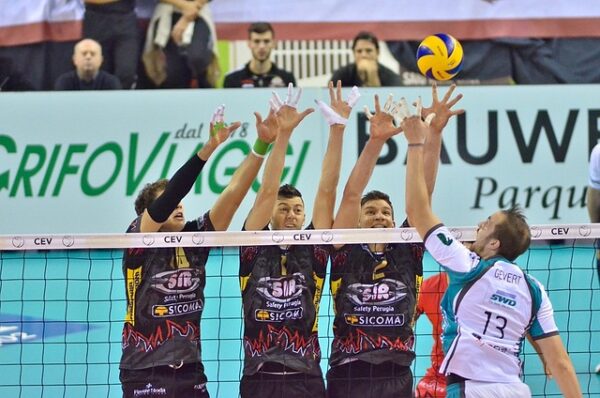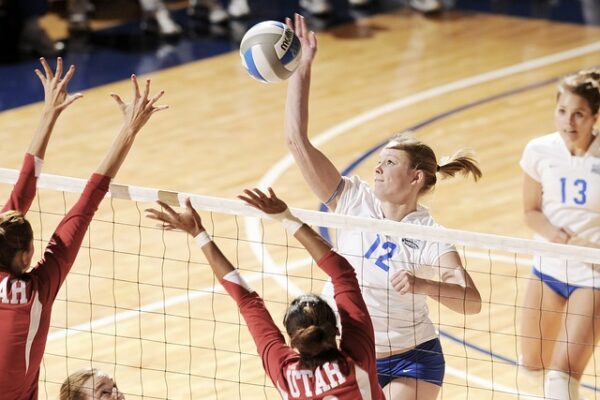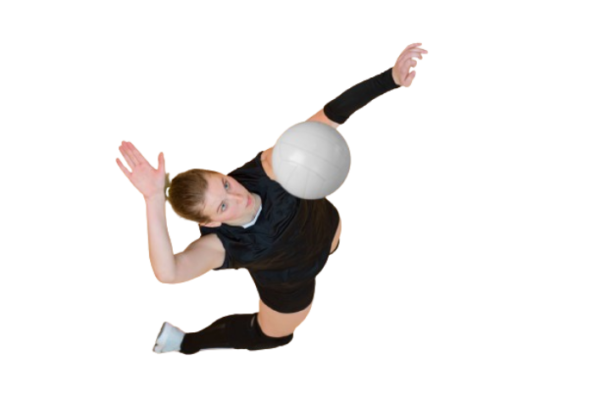Introduction
Indeed, volleyball always requires teamwork, skill, and strategy. After watching or playing many volleyball games, one question that pops up a lot, especially for those just starting or those who love the game: “How many times can you hit the ball in volleyball?” Well, the answer to that lies in grasping the basic rules and ideas behind the game.
How Many Times Can You Hit the Ball in Volleyball?
When a team gets the ball in volleyball, they have three chances to hit it back over the net. These hits are often called the “three-hit rule” or the “three-touch rule.” Players must know how to use these hits well because it helps them control the game and make good plays.
Let’s break down the three-hit rule and explore how it applies during gameplay
First Touch (Pass or Reception)
The first contact typically occurs when a player receives a serve or a hit from the opposing team. This initial contact is crucial as it sets the stage for the subsequent plays. Players commonly use techniques such as passing (also known as bumping) or setting to control the trajectory and direction of the ball.
Second Touch (Set)
Following the initial pass, the second contact is often a set. A set involves a player using their hands to accurately position the ball for an attacking player to strike. Precision and timing are essential in executing a successful set, as it determines the quality of the attack that follows.
Third Touch (Attack or Spike)
The third contact is typically the final opportunity for a team to return the ball over the net. This contact is commonly an attack, where a player jumps and strikes the ball forcefully into the opponent’s court, aiming to score a point or maintain control of the rally.
The attack can take various forms, including a spike, tip, or roll shot, depending on the situation and the player’s position on the court.

It’s important to note that while each team is allowed three hits, there are certain exceptions and rules to consider: Following Are Exceptions:
First Ball Over Rule
The first touch after the opponent’s serve, commonly known as the receive, does not count towards the three-hit limit. This means the receiving team has three hits after the initial receive to return the ball over the net.
Block Touch
If a player blocks the ball at the net and the ball remains on their side, the block does not count as one of the team’s three hits. Instead, the team is still allowed three hits to return the ball over the net.
Assisted Block
Sometimes, a teammate may assist the blocker by touching the ball after the block. Similar to the block touch, this additional touch does not count towards the three-hit limit.
Joust
When players from opposing teams simultaneously contact the ball above the net, resulting in a joust, each team is granted an additional three hits after the joust is resolved.
Replay Situations
Certain scenarios, such as interference from outside factors or referee decisions, may result in a replay of the point. In these cases, the three-hit count resets, allowing both teams another opportunity to execute their plays within the confines of the three-hit rule.
Libero Involvement
The libero, a specialized defensive player, has some restrictions regarding attacking. While the libero can’t perform an attack hit (spike) from anywhere above the height of the net, they are allowed to make such actions from behind the ten-foot line.
Therefore, if the libero executes a legal attack, it doesn’t count toward the team’s three hits.
Continuation of Play
If a team is unable to return the ball over the net within three hits due to certain circumstances such as a block deflection or a hard-driven attack that is difficult to control, play continues as long as the ball remains in play.
This means that the three-hit count doesn’t reset until the ball is successfully returned over the net or the rally ends.
Overpass
If the opposing team’s attack results in an overpass (a ball that crosses the net and is not cleanly returned), the receiving team can capitalize on the opportunity to attack without using one of their three hits.

Conclusion
So, to summarize, a team has three contacts to hit the ball and return it to the opponent’s side, and no player is allowed to make consecutive contacts during those three attempts.
Can you hit the ball 4 times in volleyball?
No, in volleyball, a player cannot hit the ball more than three times consecutively before it must be sent over the net.
Can a player hit the ball twice in a row in volleyball?
Yes, a player can hit the ball twice in a row in volleyball, as long as the hits are part of separate actions (such as a dig followed by a set). However, a player cannot hit the ball more than three times consecutively before it must be sent over the net.
Can you hit the volleyball twice?
Yes, a player can hit the volleyball twice, but the hits must be part of separate actions or contacts. For example, a player could make a pass (bump) and then follow it with a set or an attack (spike), but they cannot hit the ball twice consecutively during the same action.
What is the term 4 hits in volleyball?
In volleyball, the term “four hits” refers to a violation that occurs when a team fails to return the ball to the opponent’s side within three legal hits. If a team makes four hits, it results in a point awarded to the opposing team.
When can you have 4 hits in volleyball?
In volleyball, you can have four hits if the ball is legally played by your team but is not returned to the opponent’s side within three hits. This typically happens when a team fails to execute a proper play within the three-hit limit, resulting in a violation and a point awarded to the opposing team.
Can you touch the ball twice in volleyball if it hits the net?
Yes, in volleyball, a player is allowed to touch the ball twice consecutively if the first touch is unintentional and occurs when the ball hits the net on a serve or during play. This is commonly known as a “double contact” and is considered legal if it’s a single, continuous action resulting from the ball hitting the net.
Can you touch the ball again after blocking in volleyball?
Yes, in volleyball, a player is allowed to touch the ball again after blocking it at the net, provided that the block is considered the first contact. After the block, the player or another teammate can make subsequent contacts, such as a set or a spike, as long as the team hasn’t exceeded the maximum of three contacts before sending the ball over the net.
